A real-world CSI for sea life: The lab investigating deaths we’re all complicit in
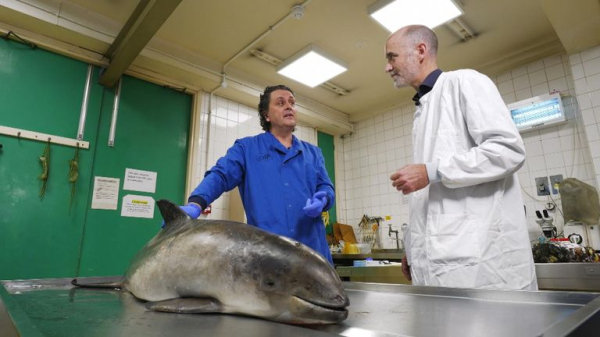
It’s like real-world CSI, but for sea life.
Warning: This report contains images of the dissection of an animal
Lying dead on a cold steel slab at the Zoological Society of London (ZSL) is a harbour porpoise, the UK’s smallest – but arguably cutest – marine mammal.
It’s about to be dissected to establish how it died.
If there are crimes investigated in this lab, they’re the kind we’re all complicit in.
Dolphins drowned in fishermen’s nets; whales deranged by military sonar and driven ashore; porpoises killed by the blunt-force trauma of a speedboat’s prow; a few however die due to the most insidious and increasingly abundant scourge at sea: plastic.

ZSL biologist Rob Deaville holds up a few metres of tangled rope and fishing line that he removed from the tail of a minke whale that washed up dead in East Yorkshire in 2020.
The mess of nylon and polyester, encrusted in goose barnacles, had cut almost halfway through the whale’s flukes (the lobes that form a tail), rendering them useless. Unable to dive and therefore feed, the whale starved.
“A four-kilogram mass of rope effectively killed a 10-tonne whale,” says Mr Deaville.
“It’s a really horrendous way for that animal to go.”
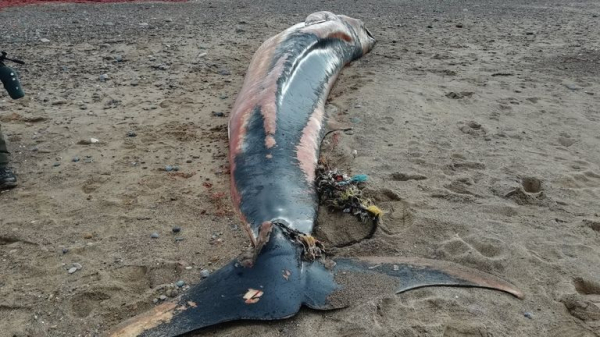
The Cetacean Strandings Investigation Programme (CSIP), which Mr Deaville leads, has been running for 30 years.
It has recorded more than 20,000 strandings of whales, dolphins, seals and sharks. The 4,500 necropsies they have performed give biologists a rare opportunity to learn more about these elusive animal’s lives.
Biologists can also learn more about the threats the animals face, whether it’s shifting predators and prey linked to climate change, disease outbreaks, chemical pollution or plastics.
Large entanglements like the one that killed the minke whale are pretty rare in UK waters, says Mr Deaville. But he worries that as plastic continues to be dumped in the ocean, it will end up more like the enclosed and litter-filled Mediterranean Sea where plastic-related deaths are common.
“In a way, the Med is a warning sign,” says Mr Deaville.
The necropsy of the harbour porpoise is a hard watch.
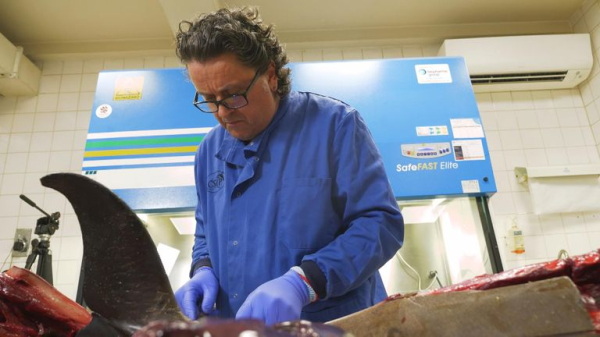
A sad end for this diminutive relative of the dolphin, so far from its natural element, being sliced apart in the name of science.
But the gruesome – and smelly – work reveals crucial data and often a cause of death.
Our poor harbour porpoise, it turns out, wasn’t the victim of plastic pollution, but a violent assault.
Examining its ribcage, Mr Deaville points out the split blubber and broken ribs characteristic of a fatal blow from the beak of a bottlenose dolphin.
For reasons as-yet unknown to science, dolphins often attack and kill their smaller cousins.
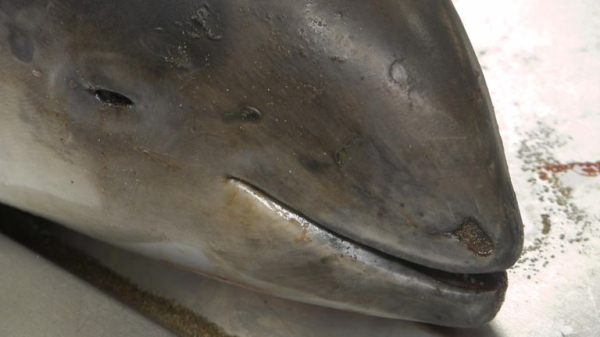
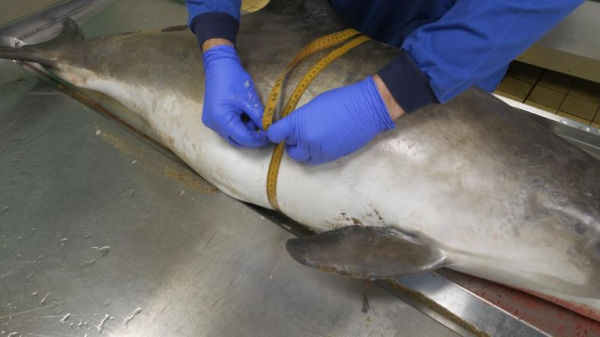
However, samples of tissues and stomach contents from this and thousands of other animals contain evidence of environmental contaminants, including microplastics, the most insidious form of plastic pollution.
A recent study by ZSL and the University of Exeter on the stomach contents of whales and dolphins stranded on UK shores found microplastics in the stomachs of all of them.
Other studies have found even smaller “nanoplastic” particles in nearly every tissue of sea mammals, from blubber to brain.
There’s no clear evidence of harm, but microplastics can release toxic chemical additives used in plastic manufacturing, and also act as surfaces on which bacterial “biofilms” grow with unknown affects.
Professor Heather Koldewey, a marine biologist at ZSL, says: “We’ve got these little balls of toxicity that are now floating around the ocean, being ingested by a range of species from the bottom to the top of the food chain.
“What we’re really starting to unpick now, is what impact is that having.”
The hard and pretty gruesome work being done here has never been more crucial.
Delegates are this week heading to the United Nations in Geneva to resume negotiations towards a Global Plastics Treaty.
It’s an attempt to try and reduce the unnecessary use of plastic, ensure more recycling and bring an end to the practice of using our seas as a dumping ground for plastic waste.
“An ambitious treaty has to start at the production end of plastic,” says Prof Koldewey. “When it gets in the ocean [it] is almost impossible to deal with.
“If you’re thinking about something like a microplastic or a nanoplastic, the same size or smaller than plankton, how can you possibly clean that up out of the ocean?”

Scientists hardly need more evidence to prove plastic is a problem.
But the work of CSIP and other researchers shows they’re only beginning to understand the impact of the mess we’ve already made. And its one that may persist for centuries.
That fact alone, should persuade the world to act faster.

